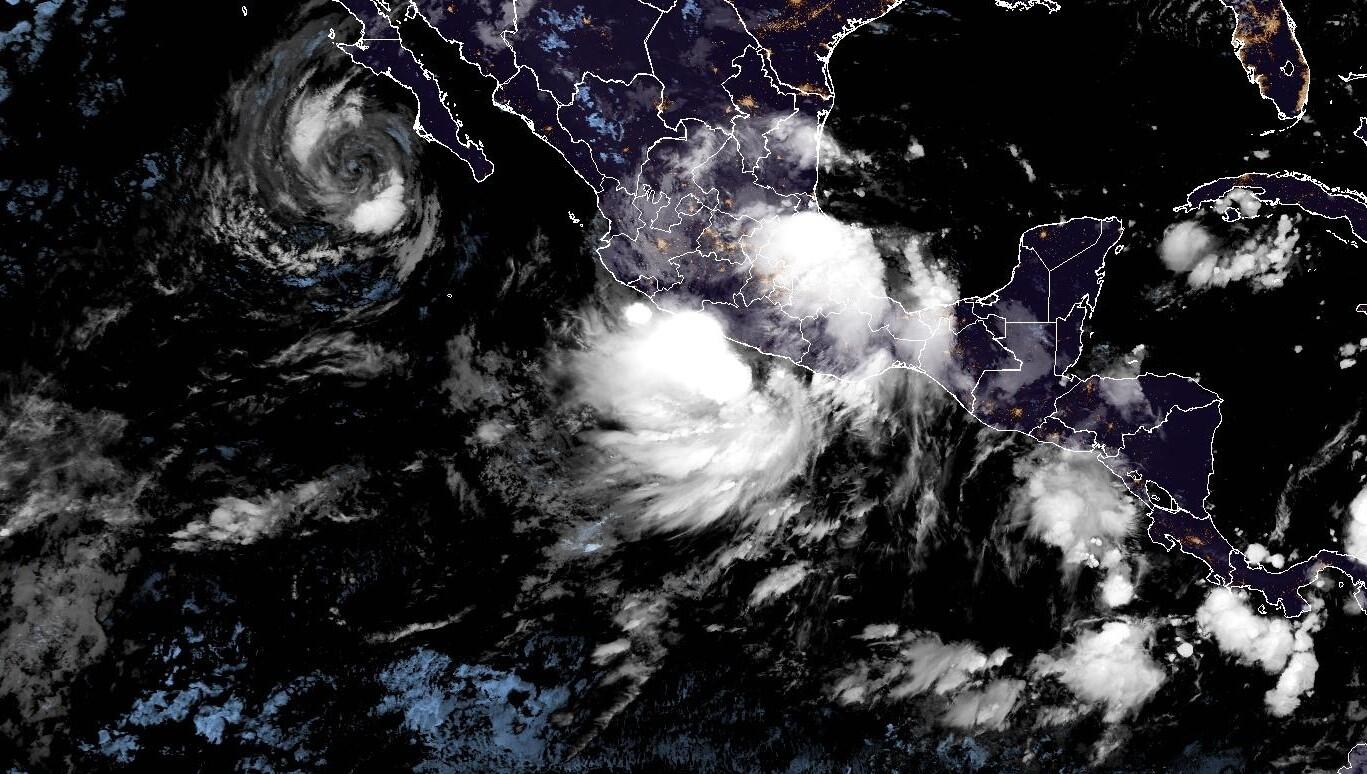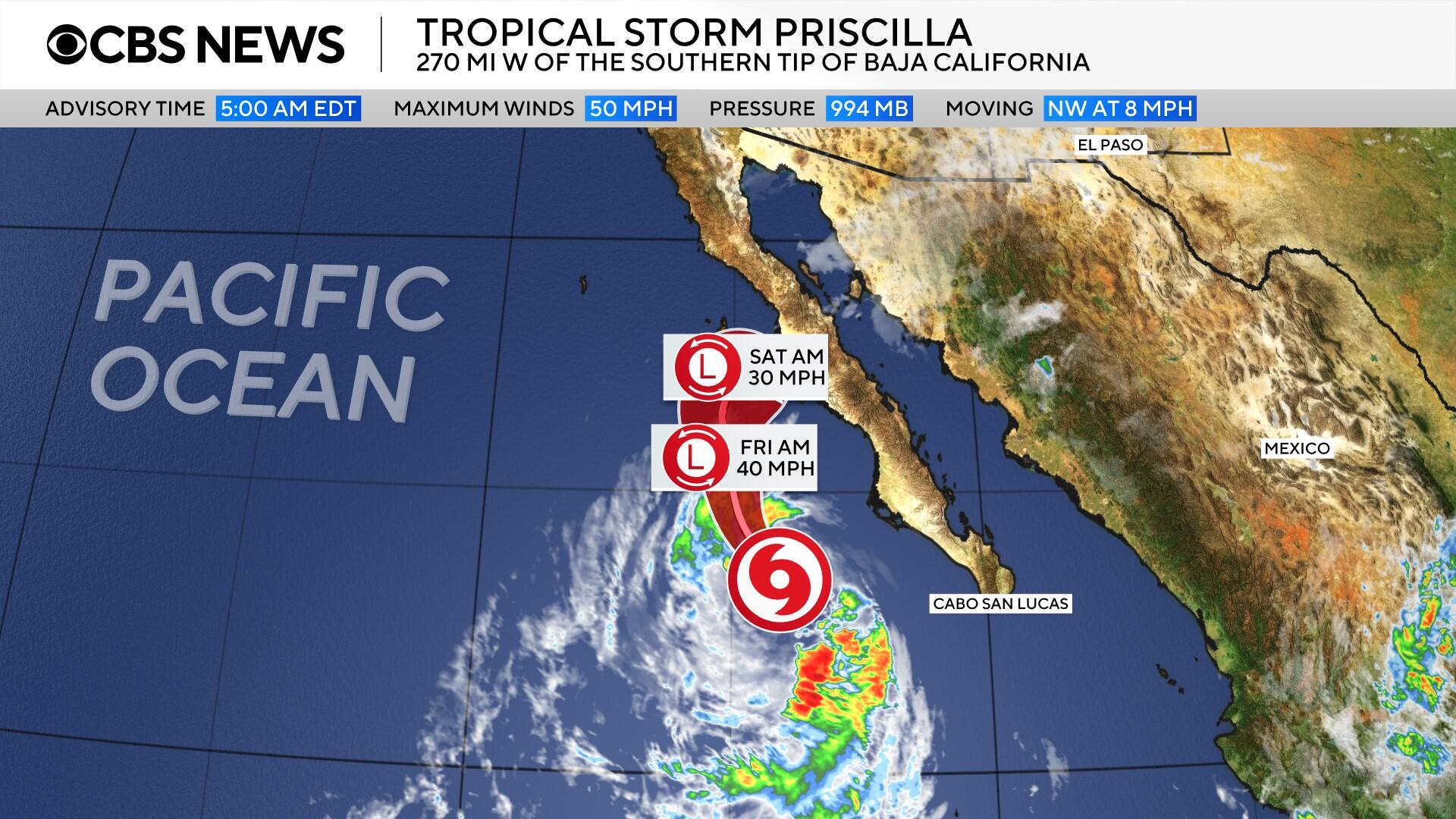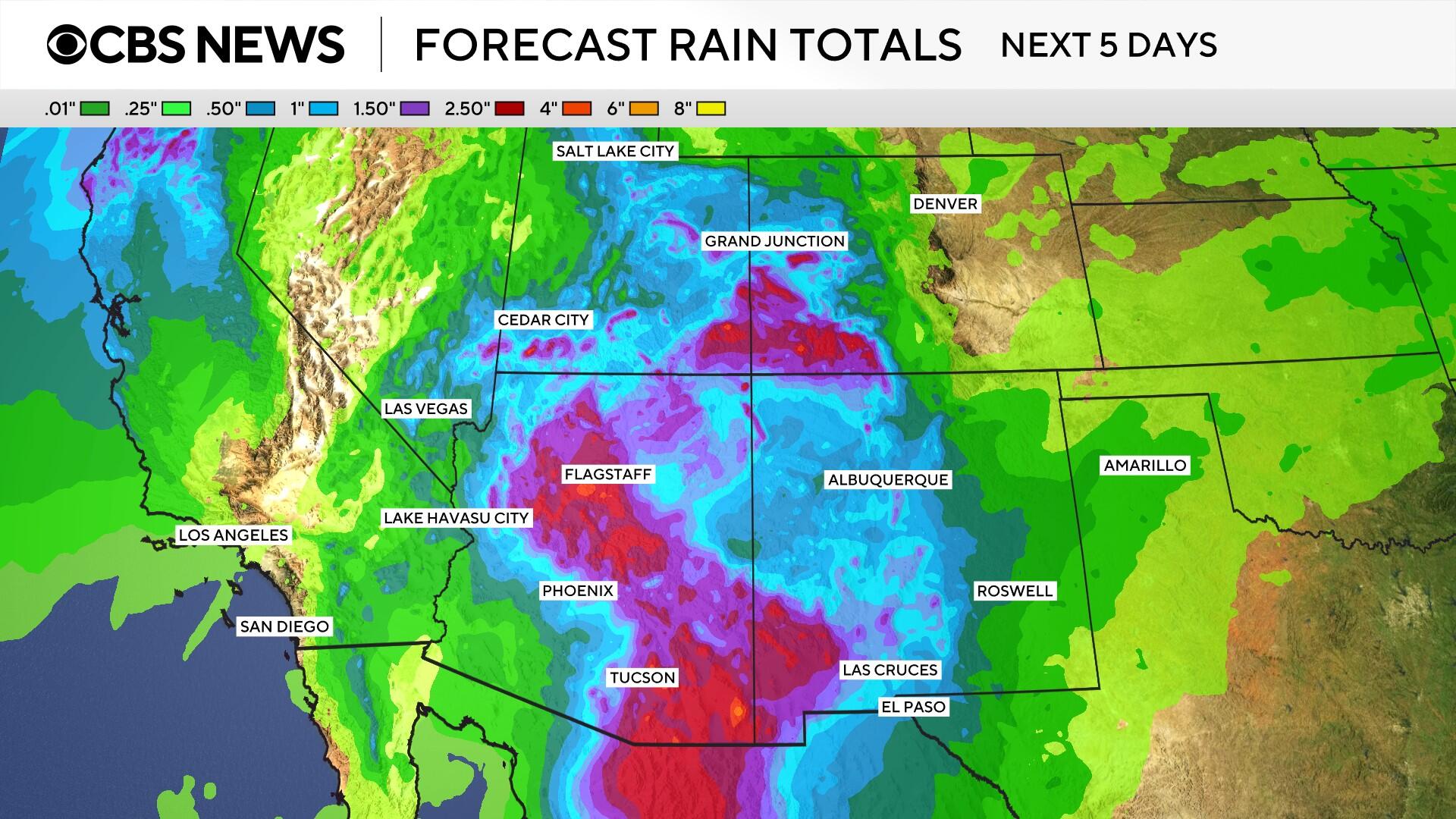Tropical Storm Priscilla has been losing punch but could still bring flash flooding to the southwestern U.S. in the coming days, forecasters say.
Priscilla went from a hurricane to a tropical storm off Mexico’s Pacific coast on Wednesday, the Miami-based National Hurricane Center said, and is expected to continue to weaken and become a post-tropical cyclone by Friday.
As of Thursday afternoon, Priscilla was some 165 miles west of Cabo San Lázaro in Baja California Sur, Mexico, with maximum sustained winds of 45 mph, the hurricane center said. It was moving north-northwest at 8 mph. A tropical storm has sustained winds between 39 and 73 mph.
NOAA/National Hurricane Center
Tropical Storm Priscilla’s track and forecast
On the forecast track, Priscilla’s core “is expected to move parallel to, but offshore of, the coast of Baja California Sur,” the hurricane center said, adding that a turn “toward the north” is anticipated later Thursday and into the evening.
Up to an inch of rain is expected across the Baja California peninsula as Priscilla moves off the west coast of Baja California, the center said.
Nikki Nolan/CBS News
For the southwestern U.S., between 2 and 4 inches of rain is expected across portions of central and northern Arizona, southern Utah and southwest Colorado through Saturday, the NHC said.
“Flash flooding is likely in portions of central Arizona, with scattered areas of flash flooding expected across the remainder of Arizona, southern Utah, southwest Colorado and far northwest New Mexico,” it added.
Nikki Nolan / CBS News
The center cautioned that “large swells generated by Priscilla are affecting the Pacific coast of Baja California Sur as well as portions of coastal southwestern and west-central Mexico. These swells are likely to cause life-threatening surf and rip current conditions, in addition to some coastal flooding.”






:max_bytes(150000):strip_icc()/TAL-lead-oberoi-vindhyavilas-luxury-private-deck-view-bamboo-grove-ALISTPOSTMARION0925-9b7ddd651a7e4af2a285aba8627fdaa7.jpg)
0 Comments